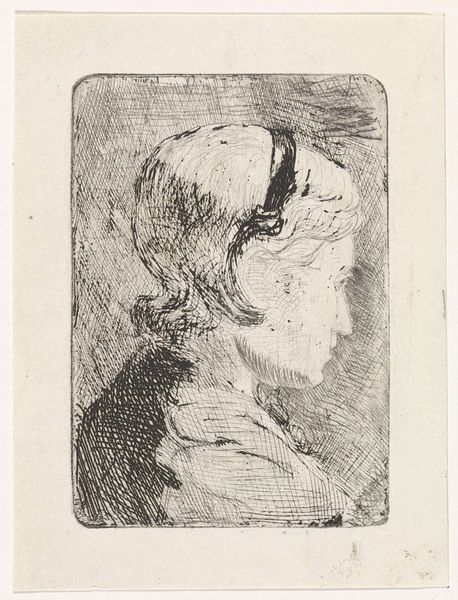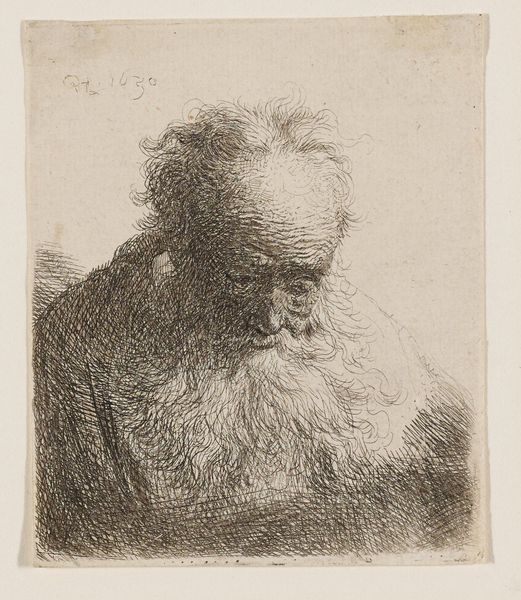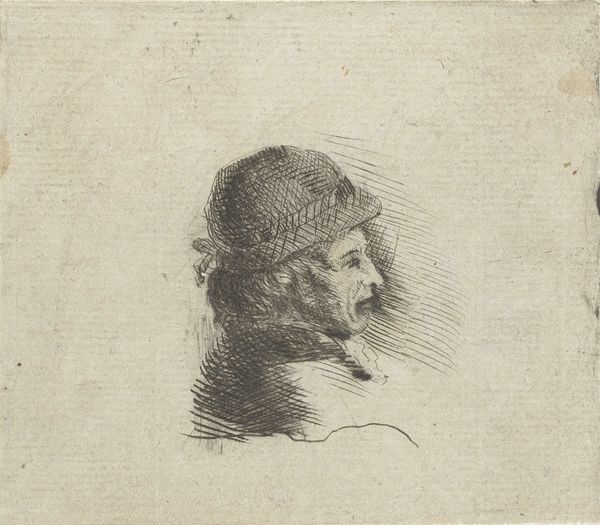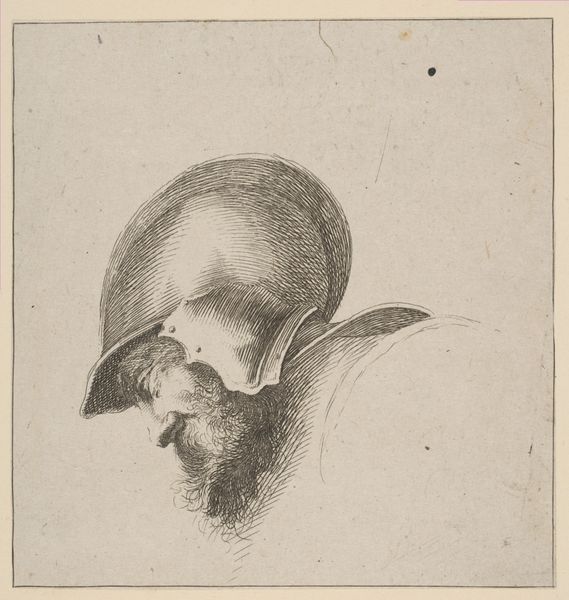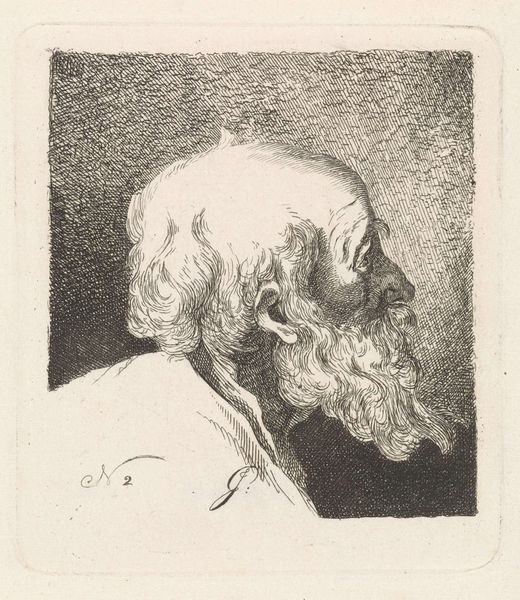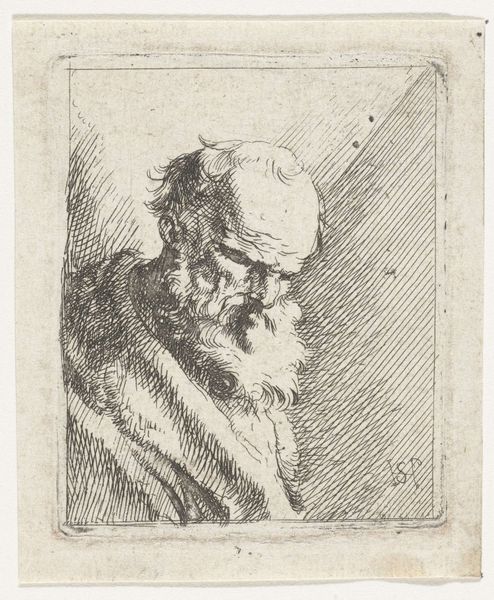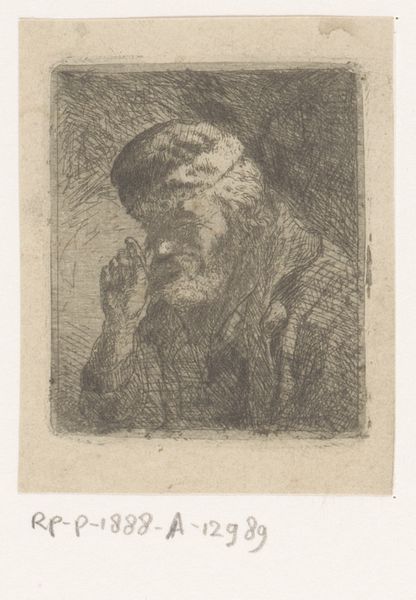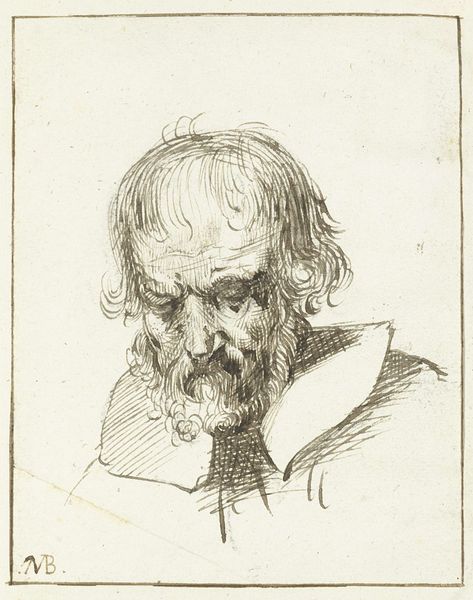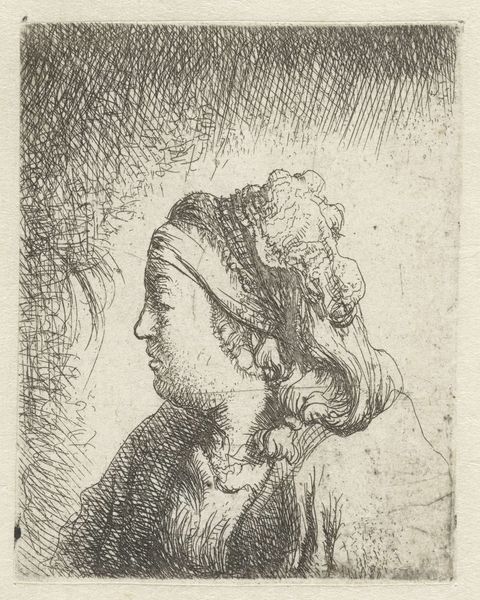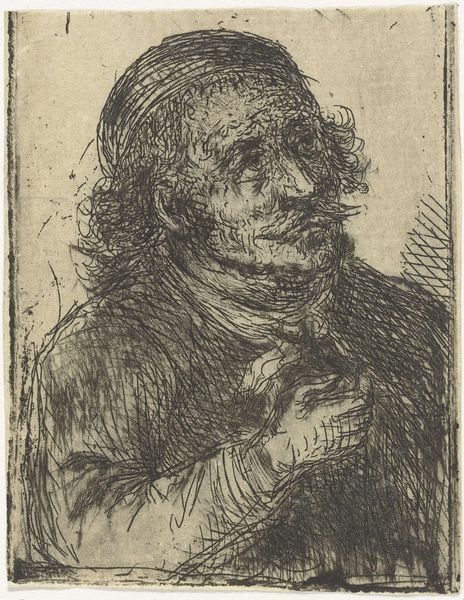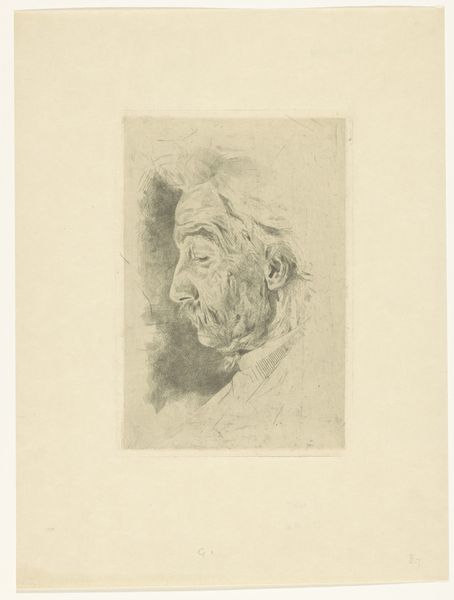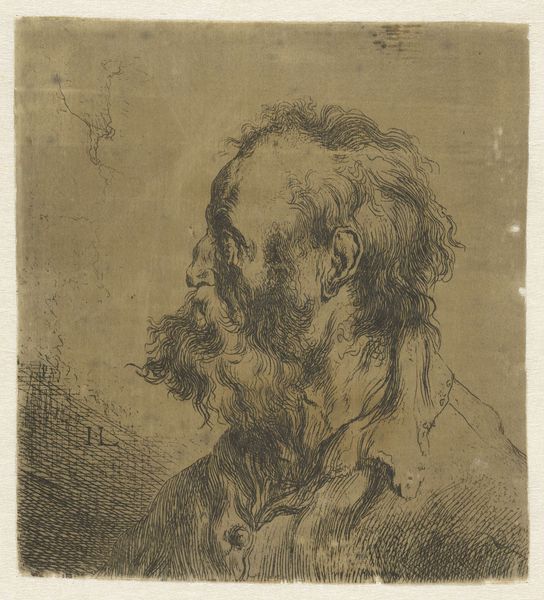
drawing, print, etching, engraving
#
portrait
#
drawing
#
baroque
# print
#
etching
#
pencil sketch
#
engraving
Dimensions: height 87 mm, width 67 mm
Copyright: Rijks Museum: Open Domain
Curator: Let's discuss Jan de Bisschop's "Head of an Old Man Looking Down," created between 1638 and 1671. This artwork resides here at the Rijksmuseum. Editor: It evokes a sense of weariness. The downwards gaze, combined with the etched lines forming deep wrinkles, speaks volumes. What draws you to this piece? Curator: For me, it is the visual narrative of aging. I think about what it means to depict aging men, especially at this time in Europe's development, within broader narratives of patriarchy, and even senicide, especially with the implications around intergenerational transfers of wealth. The way the image is captured brings me back to looking at my grandfather and trying to analyze what society values versus what is disposable, through its male figures. Editor: I see the downward cast of the eyes as humility, but also as inward reflection. Notice how the face is enclosed within the oval frame – a shape often associated with eternity and the spiritual realm? Even the technique itself, the etching, carries connotations. Etchings preserve a vision over long expanses of time; think about all of the people that have cast their gaze at this etching and found something new to appreciate, or remember, about it. The symbol of the etching has incredible cultural longevity, for good reason. Curator: And how can we critically contextualize this notion of “cultural longevity?” Who exactly benefits from this symbolic longevity, and how do those power dynamics influence what stories endure and how they do? It’s interesting how visual signifiers of “humility” or “reflection” become shorthand for excusing complicity with harmful social hierarchies. Editor: That’s an important consideration. For me, regardless of potential interpretation of societal impact, there’s a stark universality present. We are all moving through time, toward aging, regardless of privilege. We all have some experience with the symbolic associations, even fear, connected to aging and its accompanying mortality. It's what gives the artwork such potent cultural symbolism. Curator: Perhaps recognizing our own mortality is the necessary catalyst to dismantling those very structures. Thanks for exploring this etching with me, it has prompted new thoughts! Editor: Agreed, it's always valuable to re-examine how cultural symbols both reflect and influence society.
Comments
No comments
Be the first to comment and join the conversation on the ultimate creative platform.
